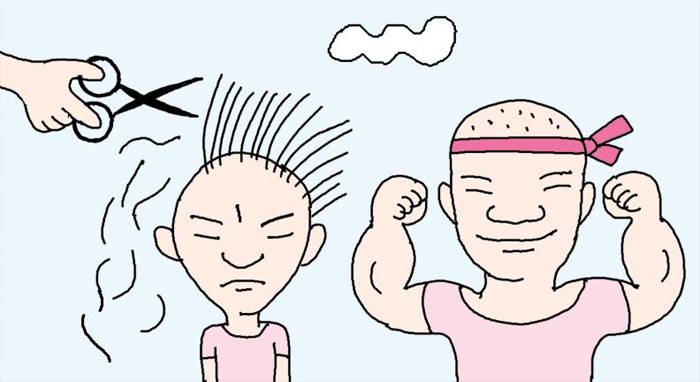사드(THAAD) 배치에 대한 집단 시위로(in a mass protest against the deployment of Terminal High Altitude Area Defense) 성주 군민 800여 명이 오는 15일 규탄 대회를 열면서(hold a rally) 공동 삭발식을 갖기로(have a collective ceremony of having their heads shaved) 했다고 한다.
언제부터, 왜, 삭발(head shaving)이 흔히 시위자들과 함께하는(be ubiquitous with demonstrators) 정형화된 의식(a stereotyped rite)이 됐을까. 동서고금을 통해(across all the ages and countries of the world) 삭발은 매우 다양한 이유로(for very diverse reasons) 행해져왔다. 실용적(practical), 종교적, 문화적, 심미적(aesthetic), 편의적 필요성 때문이었다. 맥락에 따라 대단히 다른 함의(含意)를 갖는(have widely varying connotations depending on the context) 행위였다.

애초 우리나라에선 스님이 되는(become Buddhist monks) 의례였다. 집을 떠난다는 단적인 상징(the very symbol of leaving home), 속세를 버리고(forsake the world) 세속에서 격리된 삶을 살겠다는 결의를 보이는(display the resolution to live cloistered lives) 것이었다. 이후, 이유는 다르지만, 과거의 죄수들(prisoners of the past), 군인 신병들(military recruits), 일제 식민지 지배의 수치스러운 잔재(shameful legacy of the Japanese colonial rule)였던 중고생들의 까까머리(buzz cut)가 생겨나면서 삭발은 더 이상 스님들의 전유물(exclusive property)이 아니게 됐다. 그래서 급기야 목욕탕에서 “나는 중이오” 했다가 “나는 중 3이야, 짜샤” 하는 혼쭐을 당하게도 된 것이다.
연좌 집회를 하면서(stage a sit-in protest) 삭발을 하는 것은 소기의 목적을 달성하겠다는 결의를 과시해(show off their resolution to attain their intended goals) 지지자들의 결속을 다지기(strengthen solidarity among their supporters) 위해서다. 자신들의 이익을 확보하겠다는 의지를 재차 강조하려고(in a bid to renew their will to secure their interests) 동료 시위자들을 자극하는 과격한 수단(a radical tool to stimulate fellow demonstrators)이다. 오죽하면 부모로부터 물려받은(inherit from their parents) 신체발부의 머리털을 밀어버리는 중대한 불경을 저지르겠느냐는(commit a grave impiety) 시위이기도 하다.
박무종 코리아타임스 고문이 예전 칼럼에서 비유한 바 있듯이, 성서에 나오는 삼손은 머리털을 잘려 힘을 잃었는데, 시위자들은 힘을 얻기 위해 스스로 삭발을 한다(take the tonsure to gain strength).